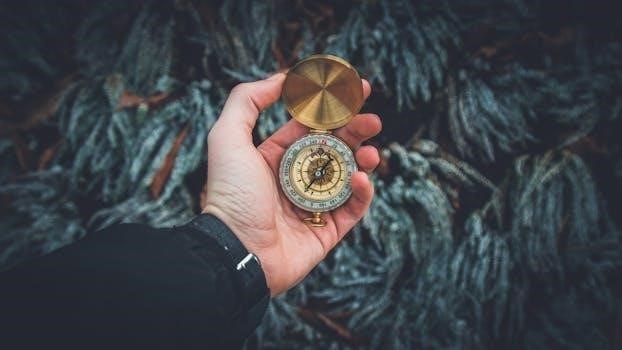Understanding Clipper Guard Sizes
Clipper guards are essential attachments that determine the length of hair left after a cut. These guards, typically numbered, provide a consistent and controlled trim. Lower numbers mean shorter cuts, while higher numbers result in longer hair lengths.
Clipper guards are fundamental tools for achieving various haircuts with electric clippers. These attachments, often made of plastic or metal, fit onto the clipper blades, creating a barrier that controls the cutting length. They enable users to cut hair uniformly, preventing accidental bald spots or uneven trims. Understanding clipper guards is key to mastering at-home haircuts or for professional barbers. Each guard is labeled with a number, which corresponds to the length of hair it leaves behind. By selecting the right guard, you can maintain your desired style. Guards are essential for creating fades, tapers, and various other popular hairstyles. They offer a simple way to achieve even and consistent results every time you cut your hair. Using the right guard size will help you avoid making mistakes with your haircut.

Clipper Guard Numbering System
Clipper guards are graded by numbers, typically ranging from 0 to 8 or higher. These numbers do not directly correspond to the size in inches or millimeters, but rather a relative length. Lower numbers mean shorter cuts.
Number to Length Conversion (Inches & Millimeters)
Understanding the conversion of clipper guard numbers to actual lengths is crucial for achieving the desired haircut. While the numbering system is standard, the precise length in inches or millimeters varies slightly between brands. Generally, a number 1 guard might cut to about 1/8 inch (3mm), while a number 4 guard could leave around 1/2 inch (13mm). It’s important to consult a brand-specific clipper guard size chart to confirm the exact measurements. These charts are essential for accurate length control, aiding both professional barbers and individuals cutting hair at home. The provided conversion tables are for reference.
Common Clipper Guard Sizes
Clipper guards are typically numbered from 0 to 8, with some going up to 10 or 12. These numbers correspond to specific cutting lengths, aiding in creating various hairstyles.
Sizes 0 to 3⁚ Short Haircuts
Clipper guards ranging from sizes 0 to 3 are typically used for achieving short hairstyles, such as buzz cuts, fades, and very short tapers. A size 0, often used without a guard, provides the closest cut to the scalp. Size 1 leaves about 1/8 inch of hair, suitable for a very short buzz cut. Size 2 offers a slightly longer length, around 1/4 inch. Finally, size 3 leaves approximately 3/8 inch of hair, ideal for crew cuts and slightly longer buzz styles. These smaller sizes are essential for creating clean, sharp looks.
Sizes 4 to 8⁚ Longer Haircuts
Clipper guards sized 4 through 8 are generally used for longer haircuts. A size 4 guard leaves approximately ½ inch of hair, suitable for a longer crew cut or a short textured style. Size 5 provides a length around 5/8 inch, while size 6 leaves about ¾ inch of hair. Size 7 will give you around 7/8 inch of length, and size 8 will leave an inch of hair. These guards are perfect for creating classic, medium-length looks, and for styles where more hair is desired on top. These sizes offer a variety of lengths for various styling needs.

Clipper Guard Size Charts
Clipper guard size charts are crucial for understanding the precise length each guard provides. These charts typically list guard numbers alongside their corresponding cutting lengths in both inches and millimeters.
Remington Clipper Guard Chart
The Remington clipper guard chart is a helpful tool for users to select the appropriate guard for their desired hair length. These charts typically display the different guard sizes alongside their corresponding cutting lengths, usually in both inches and millimeters. For instance, a number 8 guard on a Remington clipper might correspond to a 1-inch or 25mm cut. These charts are essential for achieving consistent results. It is important to consult the specific chart that comes with your Remington model, as measurements can vary slightly. This chart helps users understand what each guard offers, which is key to getting the desired style.
Oster Clipper Guard Chart
The Oster clipper guard chart provides a guide to the various guard sizes and their corresponding cutting lengths. Oster guards are often identified by numbers, and each number corresponds to a specific length in both inches and millimeters. For example, an Oster number 0 guard may cut at 1/16 inch or 1.5 mm, while a number 4 guard may cut at 1/2 inch or 13mm. It is important to refer to the Oster chart that matches your particular clipper model, as the sizes may vary. These charts help users understand the lengths, which leads to precise and predictable results. This ensures consistent and professional-looking haircuts.

How to Choose the Right Guard Size
Selecting the correct guard depends on your desired style and hair type. Experiment with different sizes or consult a barber. Start with larger sizes, going down gradually to the desired length.
Considering Hair Type and Desired Style
When choosing a clipper guard size, it’s crucial to consider both your hair type and the specific style you aim to achieve. For those with thick, coarse hair, a higher guard number might be initially preferable to prevent cutting too short too quickly. Conversely, individuals with fine hair might find lower guard sizes suitable for achieving desired shorter styles. The desired style plays a crucial role; fades and tapers often require multiple guard sizes, while a uniform length might need just one. Experimentation and understanding your hair’s response to different guard lengths are key in achieving the perfect look;
Specialty Guards and Attachments
Beyond standard guards, specialty attachments like texturizing guards and magnetic guards offer unique styling options. These can help create layered looks or provide a secure fit for various clippers.
Texturizing Guards and Magnetic Guards
Texturizing guards are designed to create a more layered and varied hair length, rather than a uniform cut. They often feature teeth or uneven surfaces that remove some hair while leaving other strands longer, thus creating a textured effect. Magnetic guards, on the other hand, are designed for ease of use and secure attachment, typically snapping onto the clipper with magnets rather than clips. This makes them quick to change and less likely to slip during use. Both types of guards offer specialized options for more advanced styling and are not typically part of standard clipper sets.

Clipper Guard Usage Techniques
Effective clipper use involves consistent passes, moving against the hair growth. Start with a longer guard and gradually decrease for desired length. Overlapping strokes ensure even cuts and prevent lines.
Using the Adjustable Lever
The adjustable lever on clippers is a crucial tool for fine-tuning hair lengths between guard sizes. This lever modifies the blade’s cutting distance, allowing for subtle adjustments within a single guard setting. When the lever is closed, the blade cuts shorter; opening it increases the cutting length, usually by a fraction of a millimeter. This feature is particularly useful for blending and creating seamless transitions between different lengths, such as in fades or tapers. Mastering the lever gives you more control, enabling more precise and custom haircuts without changing guards constantly. Experiment to understand how it changes your cut.
Clipper Guard Maintenance
Maintaining clipper guards is crucial for their longevity and performance. Regularly cleaning them of hair and debris ensures smooth cuts. Washing and drying them keeps them hygienic and ready for use.
Cleaning and Care
Proper cleaning and care of your clipper guards are essential for maintaining their effectiveness and hygiene. After each use, remove any accumulated hair using a small brush or cloth. Washing the guards with warm, soapy water helps to eliminate residue and prevent buildup. Ensure they are thoroughly dry before storing them to avoid rust or corrosion. Regularly lubricating the clipper blades, if applicable, will also prolong the life of both the clippers and guards. This will guarantee a smooth, consistent cut every time you use them. Proper maintenance will help maintain the precision of your clipper guards.
